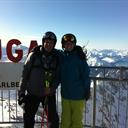Which of these denotes UTC in aviation communications?
Greenwich Mean Time (GMT) was traditionally considered as the mean solar time at the Royal Observatory in Greenwich, London: a world reference time. As the United Kingdom developed into an advanced maritime nation, British mariners kept at least one chronometer on GMT to calculate their longitude from the Greenwich meridian, which was considered to have longitude zero degrees, by a convention adopted in the International Meridian Conference of 1884. Synchronisation of the chronometer on GMT did not affect shipboard time, which was still solar time. Using a standard method of lunar distances based on observations at Greenwich led to GMT being adopted worldwide as a standard, independent of location. Most time zones were based upon GMT.
Nowadays GMT is one of the names of the time zone UTC or UTC+00:00 -- “UTC” stands for “Coordinated Universal Time.” Time zones are defined as differing from UTC by a specific number of hours, or parts of hours. Current time in a particular time zone can be determined by adding or subtracting the number of hours and minutes specified by the UTC offset.
The time zone UTC is sometimes denoted by the letter Z, with other zones identified by letters of the alphabet. Since the NATO phonetic alphabet word for Z is "Zulu", UTC is sometimes known as "Zulu time". "Zulu" is the universal standard in aviation to ensure that all pilots, regardless of location, use the same 24-hour clock, thus avoiding confusion when flying between time zones.
More Info:
en.wikipedia.org











